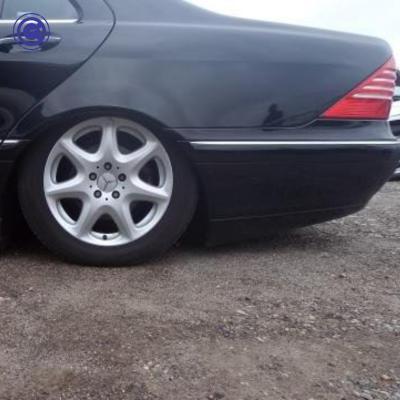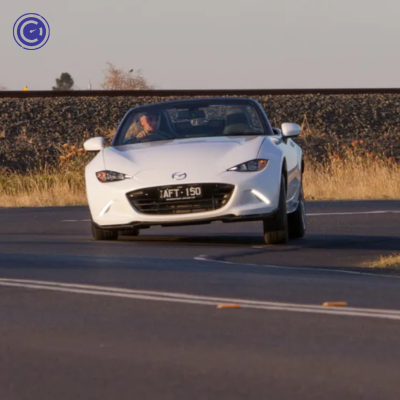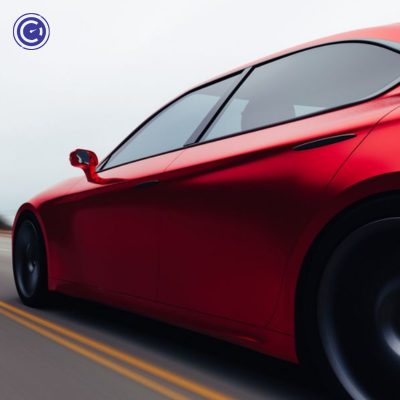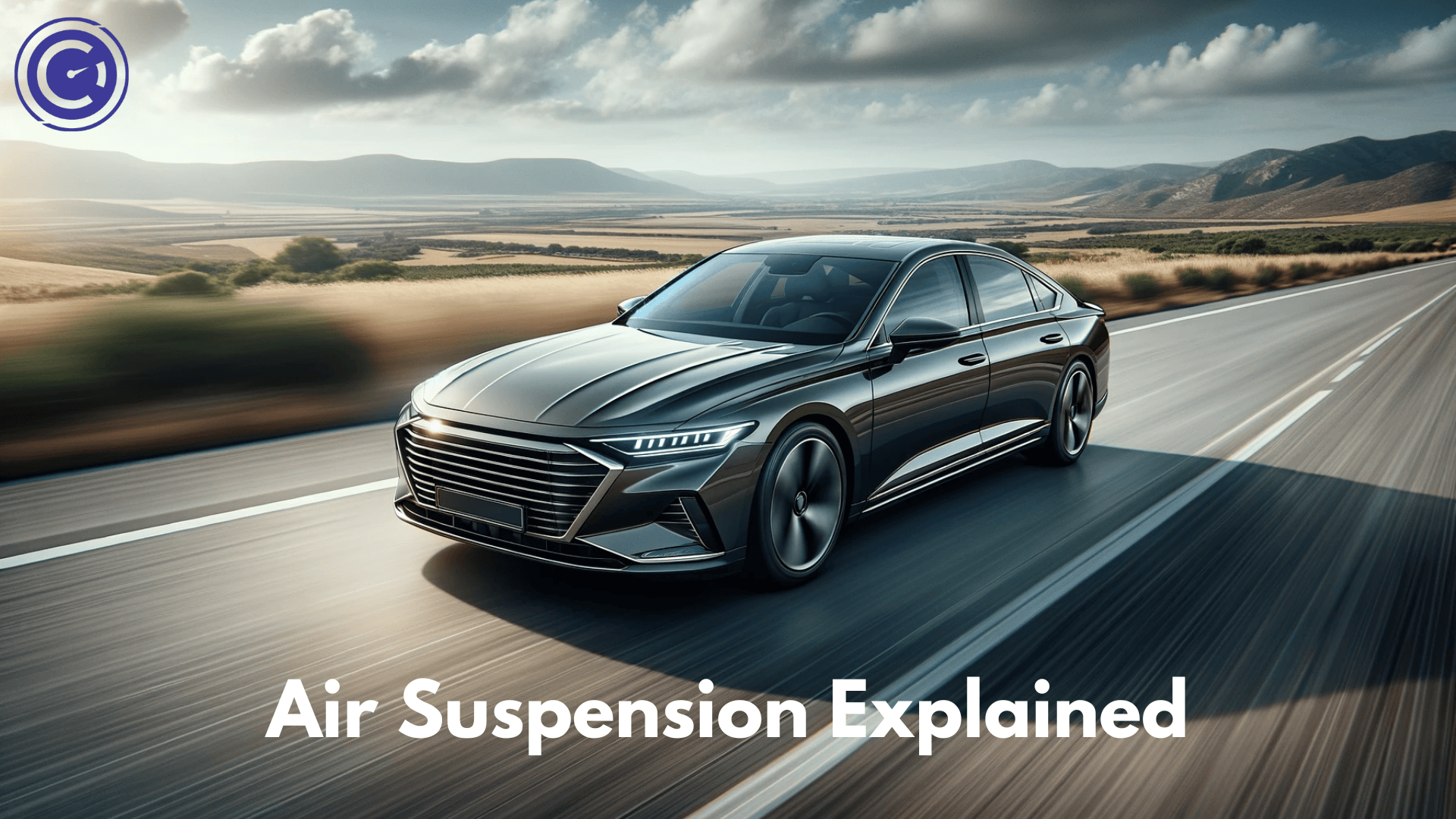Imagine gliding over bumps and potholes with such ease that you barely feel them. That’s the magic of air suspension – a technology that’s transforming the driving experience, making it smoother, more luxurious, and increasingly popular in both high-end cars and aftermarket setups. Let’s delve into the world of air suspension and discover how it can elevate your ride.
Table of Contents
How does Air Suspension Work?

Air suspension, a technology that has revolutionized the comfort and control of modern vehicles, is an intricate system that replaces traditional metal springs with air springs. This system not only enhances the smoothness of your ride but also offers adjustability that can adapt to different driving conditions and preferences. Let’s break down how air suspension works and the principles behind its operation.
Key Components of Air Suspension
To understand how air suspension works, it’s essential to familiarize yourself with its main components:
- Air Springs (Air Bags): These are the core of the system. Made from durable rubber and plastic, they replace the coil springs found in traditional suspension systems. They can be inflated and deflated to adjust the vehicle’s ride height.
- Air Compressor: This electric pump compresses air and feeds it into the air springs. It’s typically mounted under the vehicle and is controlled by the electronic control unit (ECU).
- Air Lines: These are the conduits that transport compressed air from the compressor to the air springs.
- Valves: Responsible for controlling the flow of air into and out of the air springs, allowing for adjustments in suspension stiffness and vehicle height.
- Electronic Control Unit (ECU): This is the brain of the air suspension system. It receives signals from various sensors around the vehicle and adjusts the air pressure in the springs accordingly.
- Sensors: They monitor factors like vehicle speed, load, and road conditions. The data they collect is sent to the ECU to make real-time adjustments to the suspension.
How Air Suspension Enhances Your Ride

The magic of air suspension lies in its ability to provide an unmatched level of ride quality and adaptability:
- Adjusting Ride Height: One of the key advantages of air suspension is the ability to change the vehicle’s ride height. Lowering the vehicle can improve aerodynamics and stability at high speeds, while raising it is beneficial for off-road driving or clearing obstacles.
- Improving Ride Comfort: By adjusting the amount of air in the springs, the system can soften the ride, absorbing bumps and road imperfections more effectively than traditional springs.
- Handling and Stability: Air suspension can automatically adjust the vehicle’s stance during cornering, reducing body roll and improving handling.
- Load Leveling: In vehicles carrying heavy or uneven loads, air suspension can adjust to maintain a level stance, ensuring stability and safety.
Air Suspension in Action
When you drive, the sensors continuously send data to the ECU, which then decides whether to add or release air from the springs. For example, on a smooth highway, the system might lower the car for better aerodynamics and fuel efficiency. Conversely, on a rough road, it might raise the car to increase ground clearance and absorb impacts more effectively.
In high-performance or luxury vehicles, drivers can often manually adjust their suspension settings, choosing between a sportier or a more comfortable ride.
Pros and Cons of Air Suspension

Air suspension systems, with their innovative technology, have revolutionized the driving experience for many. While they offer a range of benefits, especially in terms of ride quality and performance, there are also some drawbacks to consider. Understanding both sides of the coin is essential for car owners and buyers when considering air suspension for their vehicles.
Pros of Air Suspension
1. Enhanced Ride Comfort
- Smooth Ride: Air suspension absorbs road imperfections, delivering a smoother ride compared to traditional spring systems.
- Reduced Vibration: It significantly decreases the vibration felt inside the vehicle, enhancing passenger comfort.
2. Adjustable Ride Height
- Versatility: Drivers can adjust the vehicle’s height depending on the driving conditions – lower for improved handling and aerodynamics, higher for better ground clearance.
- Easy Loading: It also facilitates easier loading and unloading by lowering the vehicle.
3. Improved Handling and Stability
- Reduced Body Roll: Air suspension systems can automatically adjust during cornering, minimizing body roll and improving overall vehicle stability.
- Adaptive Performance: Some systems can adjust the suspension settings based on driving style and road conditions, optimizing performance.
4. Load Leveling
- Even Weight Distribution: Ideal for vehicles carrying heavy loads, as it maintains an even ride height irrespective of the weight distribution, enhancing safety and stability.
5. Customization
- Personalization: Offers a range of customization options, appealing to enthusiasts who prioritize aesthetics and performance.
Cons of Air Suspension

1. Higher Cost
- Expensive Installation: Air suspension systems are generally more expensive to install than traditional suspension systems.
- Maintenance Costs: They may also incur higher maintenance and repair costs.
2. Complexity
- Complex System: The advanced technology and numerous components can make air suspension systems more complex and prone to more frequent maintenance.
3. Potential for Repairs
- Vulnerability to Leaks: Air springs and other components are susceptible to leaks, which can be costly to repair.
- Component Failure: The compressor and electronic systems are also prone to failure, requiring professional diagnostics and repairs.
4. Weight
- Heavier than Traditional Systems: The additional components, like the air compressor and electronic controls, add extra weight to the vehicle, potentially impacting fuel efficiency.
5. Cold Weather Sensitivity
- Performance in Cold Climates: Air suspension systems can sometimes be sensitive to extreme cold, potentially impacting their performance or reliability.
Comparing Different Air Suspension Systems
Air suspension systems have become increasingly popular due to their ability to provide a unique blend of comfort, performance, and aesthetic appeal. However, not all air suspension systems are created equal. Each brand and type offers distinct features and caters to different needs. In this comparison, we’ll explore various air suspension systems, highlighting their unique attributes to help you choose the best fit for your vehicle and driving preferences.
Popular Air Suspension Brands
1. Bilstein
- Known For: High-performance air suspensions that offer exceptional handling and ride comfort.
- Ideal For: Performance-oriented drivers and those looking for a sporty driving experience.
- Features: Superior damping capabilities, durability, and a focus on enhancing driving dynamics.
2. Arnott
- Known For: Providing reliable and high-quality replacement air suspensions, particularly for luxury vehicles.
- Ideal For: Owners of luxury cars looking for a cost-effective replacement without compromising on quality.
- Features: Broad compatibility with luxury brands, focus on OEM-quality replacements, and comprehensive kits.
3. Air Lift
- Known For: Versatile air suspension solutions, especially popular in the aftermarket scene.
- Ideal For: Custom car enthusiasts and drivers looking for adjustable ride height and improved load handling.
- Features: Wide range of adjustability, ease of use, and comprehensive kits for custom setups.
4. AccuAir
- Known For: Their advanced control systems and sleek interfaces.
- Ideal For: Tech-savvy drivers and those who prioritize ease of control and customization.
- Features: State-of-the-art control systems, user-friendly interfaces, and customizable settings.
Factors to Consider
1. Compatibility
- Vehicle Type: Ensure the system you choose is compatible with your car model and make.
- Purpose: Consider whether you need the system for daily driving, load handling, off-roading, or performance driving.
2. Performance Levels
- Ride Quality: Some systems prioritize comfort, while others focus on enhancing handling and stability.
- Adjustability: Look for the level of ride height and stiffness adjustability offered.
3. Affordability
- Initial Cost: High-end systems may offer better performance but at a higher cost.
- Maintenance Costs: Consider long-term maintenance expenses, as some systems might require more upkeep.
4. Installation and Maintenance
- Installation Complexity: Some systems require professional installation, while others offer DIY kits.
- Maintenance Needs: Understand the maintenance requirements to keep the system functioning optimally.
Real-World Examples
Consider real-world applications of these systems. For instance, a Bilstein system might be ideal for a BMW owner looking for enhanced driving dynamics, while an Arnott system could be perfect for a Mercedes-Benz owner needing a quality replacement. Air Lift could be the choice for a custom car project requiring significant ride height adjustments.
Air Suspension vs. Spring Suspension

When it comes to vehicle suspension systems, the choice often boils down to air suspension and traditional spring (coil) suspension. Both have their unique advantages and drawbacks, making them suitable for different driving needs and preferences. Understanding the differences between these two types of suspension systems can help you make an informed decision for your vehicle.
Air Suspension: The Modern Contender
Air suspension systems use air springs or bags instead of traditional metal springs. They are filled with air from a compressor and managed by an electronic control system.
Pros of Air Suspension
- Adjustable Ride Height: Drivers can alter the vehicle’s ground clearance, which is beneficial for different driving conditions.
- Improved Ride Quality: Air suspension offers superior comfort, especially over bumps and rough surfaces, by absorbing road imperfections more effectively.
- Load Leveling: Ideal for vehicles that carry varying loads, maintaining a stable and level ride.
- Customization: Offers a range of adjustments for ride firmness and height, appealing to enthusiasts.
Cons of Air Suspension
- Cost: Generally more expensive than spring suspension, both in terms of initial installation and maintenance.
- Complexity: More components mean a higher chance of something going wrong, leading to potentially costly repairs.
- Sensitivity: Can be sensitive to extreme temperatures and prone to leaks.
Spring Suspension: The Traditional Choice
Spring suspension systems, the most common type found in vehicles, use metal coil springs to absorb impacts from the road.
Pros of Spring Suspension
- Simplicity and Reliability: Less complex with fewer parts, leading to lower chances of failure.
- Cost-effective: Cheaper to manufacture, maintain, and repair.
- Consistent Performance: Offers a predictable and consistent level of performance, without the need for adjustments.
Cons of Spring Suspension
- Ride Quality: Generally offers a stiffer ride compared to air suspension, particularly noticeable on rough roads.
- No Adjustability: Fixed ride height and firmness, with no option for changes based on load or driving conditions.
- Handling: Can experience more body roll and less efficient handling compared to well-tuned air suspension systems.
Choosing the Right Suspension
The decision between air and spring suspension depends on several factors:
- Driving Needs: Consider what you primarily use your vehicle for. If you prioritize comfort and drive on varied terrains, air suspension might be the better choice. For consistent and reliable performance, especially in budget-sensitive scenarios, spring suspension is ideal.
- Budget: Air suspension systems are generally more expensive. If cost is a major factor, traditional spring suspension is more economical.
- Maintenance and Longevity: If you prefer a system with less maintenance and higher reliability, spring suspension is preferable. Air suspension systems, while offering more comfort and adjustability, require more attention and care.
- Customization: For car enthusiasts who enjoy customizing their ride, air suspension offers more options in terms of adjustability and tuning.
Should You Consider Air Suspension

Deciding whether to opt for air suspension in your vehicle depends on various factors, including your driving needs, budget, and the value you place on ride comfort and customization. Here are some considerations to help you make an informed decision:
Consider Your Driving Needs
- Comfort and Luxury: If you prioritize a smooth ride with superior comfort, especially over uneven terrains or long drives, air suspension can significantly enhance your driving experience.
- Load Handling: For vehicles frequently carrying varying loads or towing, air suspension offers the advantage of load leveling, maintaining a stable and level ride.
- Performance and Customization: If you are an enthusiast looking to customize ride height and suspension settings for different scenarios (like off-road, track, or city driving), air suspension provides this flexibility.
Assess Your Budget
- Initial Cost: Air suspension systems are generally more expensive than traditional spring suspensions. Consider if the initial investment is within your budget.
- Maintenance Costs: Be prepared for potentially higher maintenance and repair costs with air suspension. It’s more complex and may require specialized servicing.
Understand the Maintenance and Longevity
- Regular Checks: Air suspension systems require regular checks for leaks and proper functioning.
- Professional Servicing: You may need to visit a mechanic more frequently for specialized air suspension maintenance.
Evaluate Vehicle Compatibility
- Vehicle Type: Some vehicles benefit more from air suspension than others. For instance, luxury cars, SUVs, and trucks often see a more significant improvement in performance and comfort.
- Aftermarket vs. Factory Installed: Consider whether you’re looking at an aftermarket installation or purchasing a new vehicle with air suspension. Factory-installed systems are typically more integrated and reliable.
Personal Preference
- Ride Quality vs. Cost: Ultimately, it comes down to how much you value the enhanced ride quality and adjustability of air suspension versus the cost and potential maintenance involved.
Alternative Options
- If you’re uncertain about air suspension, explore high-quality spring suspension systems or other types of adjustable suspensions that might offer a balance between performance, cost, and maintenance.
Conclusion
Air suspension can be a game-changer for your driving experience, offering unparalleled comfort and control. However, it’s important to weigh the pros and cons and make an informed decision based on your specific needs and circumstances. With the right setup, air suspension can turn every drive into a smooth and enjoyable journey.

